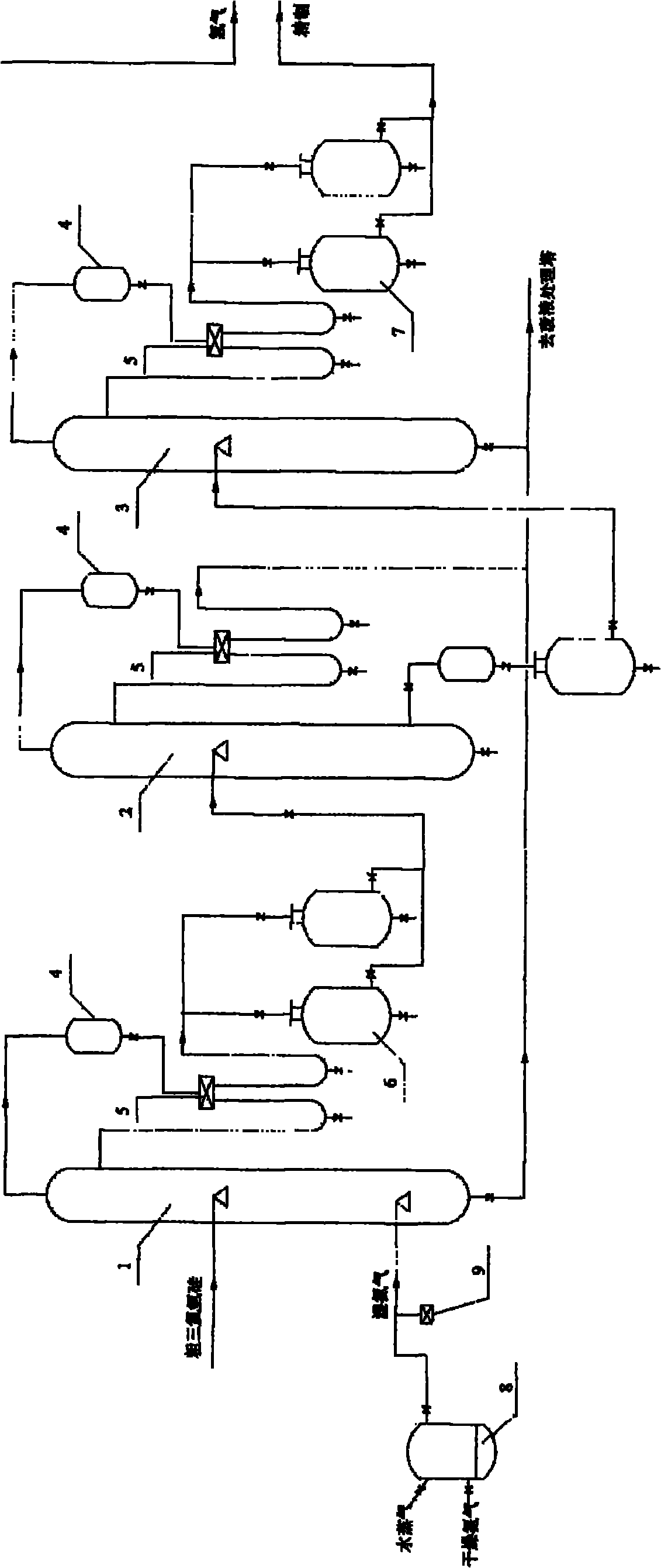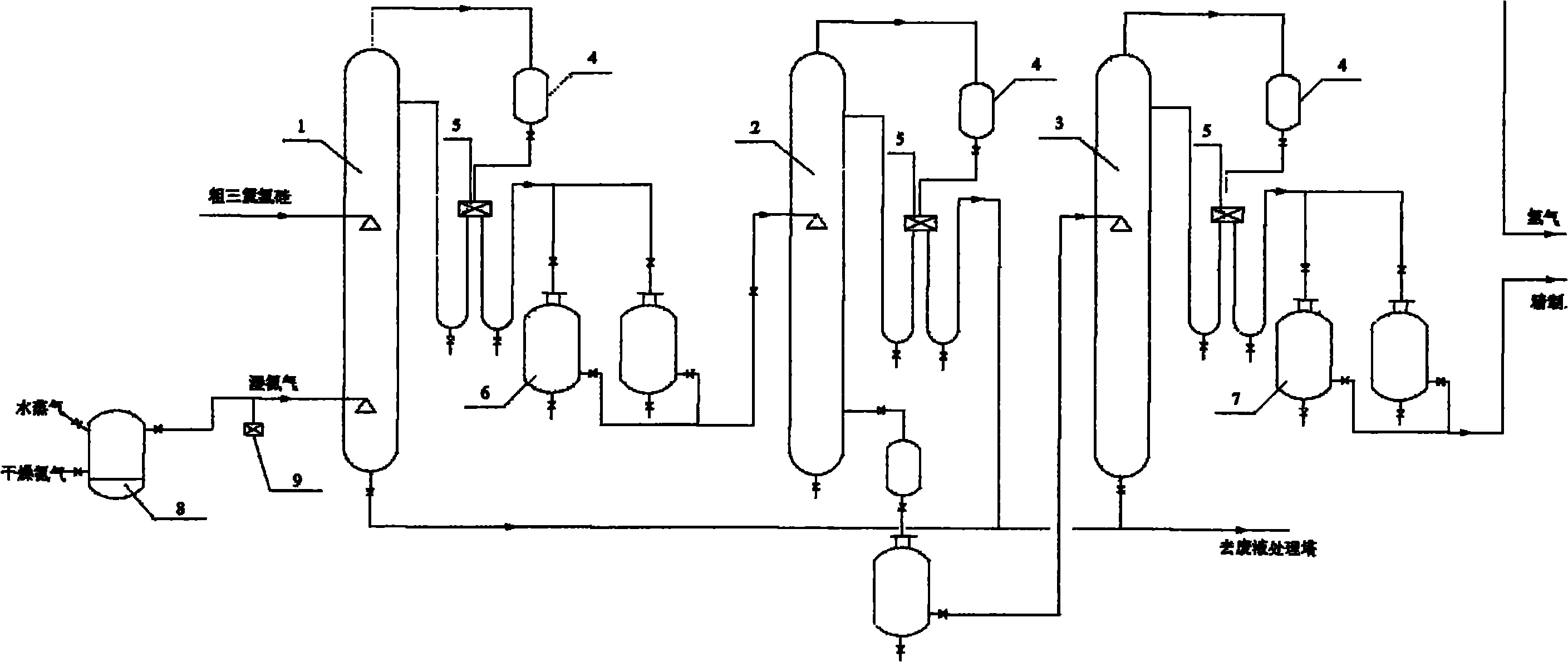Novel process for eliminating phosphorus-boron impurities contained in trichlorosilane
A technology of trichlorosilane and process, which is applied in the process field of removing phosphorus and boron impurities in trichlorosilane, can solve the problems of complicated operation, explosion, and high requirements, and achieve the effect of simple equipment, safe operation, and guaranteed quality
- Summary
- Abstract
- Description
- Claims
- Application Information
AI Technical Summary
Problems solved by technology
Method used
Image
Examples
Embodiment Construction
[0018] The present invention will be further elaborated below in conjunction with the accompanying drawings and specific embodiments. These examples should be understood as only for illustrating the present invention but not for limiting the protection scope of the present invention. After reading the contents of the present invention, those skilled in the art can make various changes or modifications to the present invention, and these equivalent changes and modifications also fall within the scope defined by the claims of the present invention.
[0019] In the following embodiments of the present invention:
[0020] The volume V of the inert gas humidification tank 8=50L;
[0021] Reactive distillation tower 1: diameter Dg=100mm, height h=3m;
[0022] Process conditions: inert gas flow rate 2-8m / s, trichlorosilane flow rate 0.5-2m / s, reaction distillation tower internal temperature 30-70°C, pressure 0.1MPa.
[0023] Such as figure 1 As shown, in the process for removing ...
PUM
 Login to View More
Login to View More Abstract
Description
Claims
Application Information
 Login to View More
Login to View More - R&D
- Intellectual Property
- Life Sciences
- Materials
- Tech Scout
- Unparalleled Data Quality
- Higher Quality Content
- 60% Fewer Hallucinations
Browse by: Latest US Patents, China's latest patents, Technical Efficacy Thesaurus, Application Domain, Technology Topic, Popular Technical Reports.
© 2025 PatSnap. All rights reserved.Legal|Privacy policy|Modern Slavery Act Transparency Statement|Sitemap|About US| Contact US: help@patsnap.com


